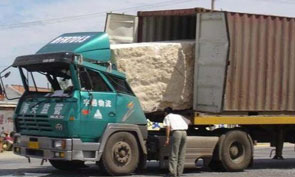
The rules and regulations relating to load securing are frequently discussed in consultation with clients – and during training sessions and presentations.
AT Cordstrap, transportation of goods always conforms to the requirements of the CTU Code – and here we provide a guide to ensuring compliant load security.
This distinction is made when considering cargo in containers. In a locked format, there is no space between the cargo and the container. Non-locked means that there is space between the cargo and the container – and this space plays a key role in cargo securing as clearly stated in Article 2.3.6 of the CTU Code.
The CTU Code says that voids must be filled, for example around vertically positioned pallets with wooden beams. Material that may deform or shrink, such as burlap fabric or semi-rigid foam may not be used for filling empty spaces. Small spaces between packages that cannot be prevented or do not interfere with proper handling are acceptable and need not
be filled. Any spaces in a horizontal plane should not exceed 15cm at any point. Spacing between rigid and resistant materials such as steel, concrete and stone must if possible be further reduced.
This 15 cm space has considerable significance – because a mass wants to move during transportation. An illustration: if a hammer lies on your thumb, there is no drama. However, if the hammer hits your thumb from a height of 15cm, it hurts! Substitute the hammer for a 20,000 kg load in a container and the force of a moving mass is dramatically illustrated.
Empty space must not exceed 15cm – in width or depth – between the side walls and the headboard (front) and doors of a container. According to Article 4.2.5 of the CTU Code – and in ISO standard containers – the doors are as strong as the bulkhead and may be used to secure a load. It is important that cargo is secured so that it cannot fall out when the container doors are opened.
The CTU Code states that where space is less than 15cm, cargo should be placed in a container so that it cannot fall out when the doors are opened; with a space of more than 15cm, the load must be secured to prevent movement during transportation. Different lashing methods should be used dependent on load type.
For expert advice on cargo securing solutions contact us now
Contact nowCordstrap have specialists in over 50 global locations
Providing physical insurance to the world’s major industries
Delivering cargo protection solutions